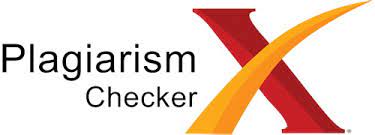Penggunaan Battom Ash sebagai Substitusi Agregat Halus Terhadap Kuat Tekan Beton dengan Mutu K-175
DOI:
https://doi.org/10.33603/jki.v12i2.9844Abstract
This study was conducted to evaluate the potential of bottom ash as a fine aggregate substitute in K-175 concrete and determine the optimum percentage that produces the best compressive strength. Mining of sand as fine aggregate for concrete has caused environmental damage, so an alternative material that is more environmentally friendly is needed. Bottom ash, a solid waste from coal combustion in PLTU, has physical and chemical characteristics that support its use in concrete mixtures. This study used variations of bottom ash substitution of 5%, 12.5%, and 17.5% of the total weight of fine aggregate. Compressive strength tests were conducted at 7, 14, and 28 days of concrete age. The results showed that 5% bottom ash substitution produced the most optimal concrete compressive strength, equivalent to normal concrete at an estimated age of 28 days at 186.86 kg/cm². Meanwhile, 12.5% and 17.5% substitution showed a significant decrease in compressive strength compared to normal concrete. The physical characteristics of bottom ash, such as higher content weight and coarse texture, contribute positively to mechanical bonding in concrete. However, the high silt content of bottom ash requires further treatment to improve its quality. This research is in line with previous studies supporting the utilization of industrial waste in concrete construction, but provides a new focus on K-175 grade concrete for lightweight construction applications. In conclusion, bottom ash can be used as an alternative fine aggregate in concrete, with an optimal substitution of 5%. The utilization of bottom ash not only supports environmental sustainability, but also offers an innovative solution for industrial waste management in construction.
Keyword: bottom ash, fine aggregate, industrial waste.
Downloads
Published
Issue
Section
License
- Authors retain copyright and grant the journal right of first publication with the work simultaneously licensed under a Creative Commons Attribution-ShareAlike 4.0 International License that allows others to share and adapt the work with an acknowledgement of the works authorship and initial publication in this journal.
- Authors are able to enter into separate, additional contractual arrangements for the non-exclusive distribution of the journals published version of the work (e.g., post it to an institutional repository or publish it in a book), with an acknowledgement of its initial publication in this journal.
- Upon receiving the proofs, the Author/Editor agrees to promptly check the proofs carefully, correct any errors, and authorize the publication of the corrected proofs.











